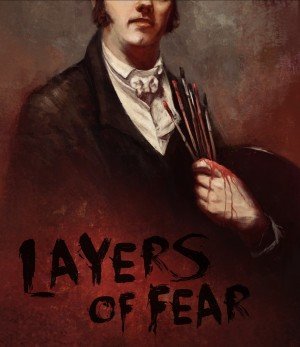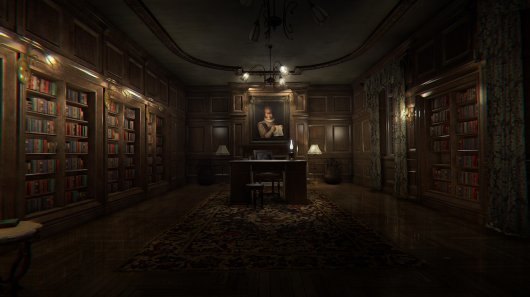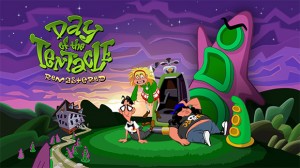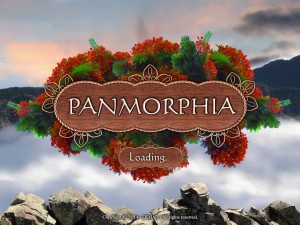Review for Layers of Fear

One of the most important yet underrated aspects of horror, whether in movies or games, is contrast – that is, the balance between periods of relative safety, tension, and explicit scares. Each element is essential. The best horror experiences include all three in moderation, with plenty of strategic downtime in between their tenser moments while keeping full-on scares in their back pocket for just the right moments. Layers of Fear, a first-person horror-adventure from the terrifyingly-named Bloober Team, aptly demonstrates the need for this balance by abandoning any sense of restraint early on.
In Layers, you play a painter struggling to create your greatest masterpiece, currently a blank canvas in your study. The work has obsessed you, driven you to the brink of madness – and possibly further. Arriving home one evening to an empty house, it becomes clear that something has gone awry with your family, who are nowhere to be seen. So of course you explore, in search of… well, something. Inspiration? Answers? Only one thing is for sure: the painting is the key to it all, and each of the game’s six chapters ends with the artwork progressing toward its grisly completion.
The core of the game is your exploration of the house at a slow, methodical pace. There is no combat or any character interaction, and only a few puzzles. Primarily, you just keep moving, and the environment is highly interactive: you can turn lights on and off, open nearly every drawer, and knock about plenty of physics-enabled objects. The house is replete with items that exist only to pick up and examine in closer detail, to add atmosphere and texture. This atmosphere isn’t particularly original – we’re all familiar with ‘spooky Victorian manor’ – but Layers of Fear renders it in gorgeous, immersive 3D detail. Especially wonderful are the strange, off-kilter paintings that line the walls: babies with furry faces, fleshy abominations, hideous portraits. More than any other element, they convey the disturbed mind of the protagonist.
The game’s first impressions had me thrilled. For the first twenty minutes or so, Layers of Fear quietly ratchets the tension to unbearable levels with an expert hand. You feel relatively safe, knowing that you won’t be thrust deep into danger too quickly, yet you cannot shake the feeling that something is amiss and this could all go south at any moment. Roaming the quiet, empty, rickety home that serves as the sole setting is, in those early moments, deeply unsettling. The creaking of wood and gentle rustling of wind is pervasive. One of the doors upstairs has a dark, sticky substance oozing out from underneath. Dissonant, muted piano underscores all of it.
Then the first frights hit. As jump scares, they work as intended, jolting you from the quiet tension of the introduction. A window slams shut. Messages appear on the walls, taunting you. As you move from room to room, it becomes clear that the house is changing its layout constantly; you might leave a room through a certain door, then return back through that same door to find yourself in a very different location. Or the inverse: you might exit a room only to find yourself back on the other side of that very room. Something is warping time and space. These moments, too, are very effective.
But then it keeps going, and going, and going. From those very first spooks, Layers of Fear never looks back toward its moody and subtle beginning. Instead it settles into a parade of rattling, impatient scares that almost never lets up, filling nearly every room with scripted sequences attempting to frighten you, rarely letting a full minute pass without shouting “BOO!” at you. A typical example: you walk into the kitchen and begin poking around, opening cabinets and scouring countertops for anything important. But lo! The door is locked behind you. What’s that crashing noise? A bottle lies broken on the floor. Who did that? The door begins rattling. The lights go out. The painting on the wall, a still life of a cornucopia, transforms into a basket of shriveled, rotting fruit. And then, accompanied by a blast of discordant strings, fruit begins flying out of the painting and spilling across the countertop. Huh?
Some of these sequences are clever, some are startling, some are unintentionally funny (such as the fruit-dispensing ghost painting). There seems to be little rhyme or reason to them, Not that horror should be strictly logical, but Layers of Fear feels especially arbitrary, deploying a grab bag of horror clichés in the hopes that enough of them will stick. Objects go flying, rooms rearrange themselves, crying children whisper, blood flows down walls, messages scrawled in blood appear and disappear, dolls teleport and shriek at you, phantom phones ring in the distance in room after room after room. It’s just too much, all peaks and no valleys – or at least, the valleys are heavily outnumbered.
Amidst all these blatant disturbances, the game never again comes close to the tension I felt early on. When you know every room is going to throw something at you, you are prepared for anything, and the umpteenth time a door suddenly slams shut in your face, or a painting changes into a bloodier version of itself, or a shadowy figure crosses the hall in the distance (complete with a loud, jarring burst of music), it simply doesn’t work anymore. Even when the game springs new ideas at you, they feel stale and predictable, as if you’ve seen them coming – because in a way, you have. After a while, the experience feels more like one of those haunted hayrides that pop up around Halloween, full of teenagers in hockey masks jumping out at you with rubber chainsaws. For every moment I felt startled there were five when I shrugged or even laughed, and I don’t mean because I’m so brave and cool that it didn’t faze me. Rather, the game is so desperate to be scary that it ceases to be.
And that’s a problem, because jump scares are really the only thing this game has going on. The story is fine, but mostly serves as thin scaffolding for the haunted hayride, relegated to short bits of internal monologues or audio flashbacks when you examine certain items and short sequences at the end of each chapter. Ostensibly the game serves as an exploration of an artist’s madness, but apparently the artist’s madness involved hallucinating every horror cliché in the book while being a huge jerk.
The puzzles, rare as they are, are another merely serviceable element of the game. The majority involve finding lock combinations, likely smeared in blood on the walls or on a note on the ground nearby. Otherwise, the only real obstacles are the occasional locked doors. There are a couple of moments that require slightly more lateral thinking to progress, one highlight involving a record player that seems to do more than just play creepy ragtime music, but don’t expect to have to think much, or really do anything other than walk from room to room. There are a few times when your character is in actual danger, but these feel arbitrary and pointless rather than tense, and the consequence for failing to avoid the threat is a short blackout rather than death.
The sound design is certainly atmospheric and does more to generate unease than any other aspect of the game. The sharp footsteps of the protagonist against the creaky hardwood floor, tree branches scraping gently against a window, and squeaking door hinges all fill the manor with an unsettling, immersive soundscape. Unfortunately, here too the game suffers from a lack of restraint, trying to jolt you into fear by accompanying scares with loud orchestral stingers and familiar horror sound effects like crying babies, breaking glass, and reverb-heavy speech played backwards. These also lose their effect before long.
By the time you reach the end of what is already a pretty short game of only a couple of hours, it feels as if it has stretched on far too long. Too many jump scares and too little of anything else result in a game that is, surprisingly, kind of boring. Once the constant assault of cheap tactics loses its impact, there’s not much else to sustain interest. Gorgeous graphics and creepy sounds help, but they only go so far.
Layers of Fear is not a bad game. There are far worse horror experiences out there. There is nothing broken about it, and several aspects of it are downright impressive, particularly the visual presentation. But when a reliance on excess elicits shrugs rather than sweat and shivers, something is amiss. And that is the real sin of Layers of Fear: it just isn’t very scary, or disturbing, or even particularly interesting once you know what to expect. Except for those bizarre paintings. Hoo boy, freaky stuff. More of that and fewer blood messages written on the walls, please.





























